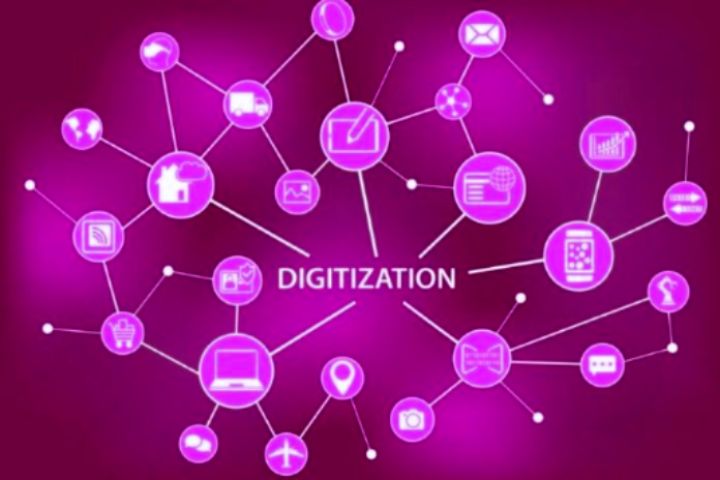Business Digitization: The confusion probably comes from the English terms Digitization and Digitalization, both of which are very similar and which many professionals in that language also tend to confuse.
Table of Contents
What Is ‘Digitization’? Difference Between Digitizing Documentation And Digitizing A Business
Rather, we refer to the business digitization or organization as the way this organization restructures itself around digital communication and digital media infrastructures.
Digitize (from physical to digital)
In this first case, we are talking about “passing through the scanner” documentation or information that was in paper or similar format in order to later be able to manage it through document management tools and solutions, being able to include from then on that digitized documentation in workflows and associate it with the different processes of the company.
It is therefore about creating a digital version (bits and bytes) of analog or physical elements, such as paper documents, microfilm images, photographs, sounds, etc. Thus, it simply consists of converting and/or representing something non-digital in a digital format that can then be used by a computer system for different uses.
Thus, in a commercial context we digitize documents for a reason : we use digital data extracted from physical media, to automate business processes and workflows.
Digitize Businesses, Organizations Or Processes
In the second case we refer to the more global process of change from analog to digital. Digitization in this sense means that companies use technology to interact with people (external and internal) in order to address particular needs.
In a digitalization of companies , it is necessary to digitize information, but its meaning is broader and data is at the center of this business digitization. These are participation systems and knowledge systems, taking advantage of digitized data and processes.
In a digitized company, the workforce works differently than the traditional one. Digital tools such as mobile devices, social collaboration and unified communication platforms are used. These are already digital systems, which makes it possible to work in a more “digital” way, in turn creating new opportunities.
Digitization As A Means To Improve Your Business Processes
Customer expectations in recent years have changed. Thanks to companies like Amazon, customers now expect any organization to deliver their products and services quickly and with a seamless user experience.
Customers want to log in to their electricity company’s website and see a real-time report of their usage. They expect to buy a phone from their telecom provider and immediately activate and configure it. They want bank loans to be approved in a few minutes.
Many of the more traditional organizations cannot meet these expectations and lose competitiveness as a result.
Although customers will express it differently, what they are demanding from companies is to review their business processes and digitize them . That they have more intuitive interfaces, that they are always available, that make them feel special with a personalized treatment, total coherence in all media and zero errors. But it is also that when companies do all this well, they can also offer more competitive prices.
Digitizing Processes To Meet Customer Expectations
To meet these high customer expectations, companies must accelerate the digitization of both their documentation and business processes.
- Reducing the number of steps required
- Reduction of the number of documents
- Development of automated decision making
- Dealing with regulatory and fraud issues
This will require redesigning operating models, skills, organizational structures, and roles to match reinvented processes. Data models must also be adjusted and rebuilt to enable better decision making, performance tracking, and customer insights.
In addition, replacing manual and paper processes with software allows companies to automatically collect data that enables a better understanding of process performance, cost drivers, and causes of risk. Real-time reports and dashboards allow administrators to address issues before they become critical.
For example, supply chain quality issues can be identified and addressed more quickly by monitoring customer buying behavior.
Digitization Security And How GDPR Affects You
The advantages of a digitization process are well known. From increased productivity to more office space. Especially when digitization is not limited to documentation but is extended to the entire company. In this way we obtain many benefits related to an improvement in results.
But don’t start a business digitization program thinking that all you’ll get is profit. Corporate security must always be taken into account, regardless of what is done in the business.
The following are some of the most common sources of security threats for a business starting to go digital :
Mobile Devices : Nearly all employees bring at least one mobile device to work, many of them two. However, most companies are lax in protecting them. Mobile devices are easy to steal and can be attacked from nearby devices, or even through text messages.
human error Many violations are the result of human error. Overly simple passwords, lost devices, and unattended computers. All systems, both online and local, must be protected with access that depends on the user role. On the other hand, all employees must be aware of the possible consequences of their actions.
Internal fraud: Without adequate internal controls, any employee can have access to information that goes beyond what their roles require
IoT . Having everything connected to the network, from your alarm systems to your air conditioning thermostat, brings many benefits, but always connected means always vulnerable.
